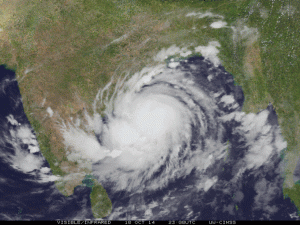Storms-Deadly
By Michael FaginMt. Everest WeatherStorms-Deadly. Recent deadly tropical storms (cyclones) in the Bay of Bengal haven’t been bigger or fiercer but they have grown increasingly impact. A quick glance at the statistics, however, might mislead toward a much different conclusion.
Before just a couple decades ago, multi-billion dollar damage estimates from storms in the Bay of Bengal weren’t a common thing. They didn’t reach $5 billion until 1999 and didn’t breach that figure until 2007. The latter amount wasn’t outdone until history’s third most costly came – 2016’s Vardah – with $7.98 billion in damages and 403 deaths. Second most costly arrived the following year – Ockhi – with $8.88 billion in damages recorded and 761 deaths.
Ranking #10 overall but #1 in the past decade is 2008’s Cyclone Nargis, which hit Myanmar and killed a recorded 138,366. As daunting as that figure is, especially relative to Ockhi and Vardah, the death tallies were actually much greater for the higher ranked storms from decades past. For instance, the Bangladeshi Great Bhola Cyclone killed about 400,000. There is even a record from 1582 of a Bangladeshi tropical cyclone that killed more – roughly 200,000. Some estimates pegged the fallout from Cyclone Nargis as over $10 billion – which would make it the region’s most costly to date – while others held it closer to $4 billion.
Storms that form in the Bay of Bengal are notoriously destructive. Eight of the top ten most deadly tropical cyclones formed in the Bay, which can harbor conditions that can intensify tropical cyclones very quickly.
Are more people dying? And is it because the storms are getting bigger? Many decades of measurements indicate both aren’t the case. Death counts are high when large and largely unprepared population centers are hit; and there are many in southeastern Asia. Recent deadly tropical cyclones in the Bay of Bengal haven’t broken any fatality records. Damage estimates are clearly on the rise but economic expansion is largely to blame. The trend of record-breakingly higher economic impacts will likely continue but it’s still unclear whether or not preventative measures will balance out population growth to keep death tallies from also eventually rising.
Given the proper northward flow, a deadly tropical cyclone in the Bay of Bengal may steer into India and head north into the Tibetan Himalaya. 2014’s Cyclone Hudhud was a prime example of that. Lead forecaster for Everest Weather, Michael Fagin notified his clients of the approaching storm a week beforehand, which was a good thing because it ended up developing winds of 135 mph and killed at least 22. With $1.6 billion in damages, it was the second most costly tropical cyclone to ever hit India.
It’s hard enough to make it through a deadly tropical cyclone in the Bay of Bengal without getting stuck on a Himalayan mountain. It is important to monitor the weather and get early warming of big storms that might be tracking for the Himalaya. These forecasts are available, and provide warning to help climbers get to safety in advance of weather dangers.

Storms- Deadly. Hudhud
Article written by Meteorologist Geoff Linsley
